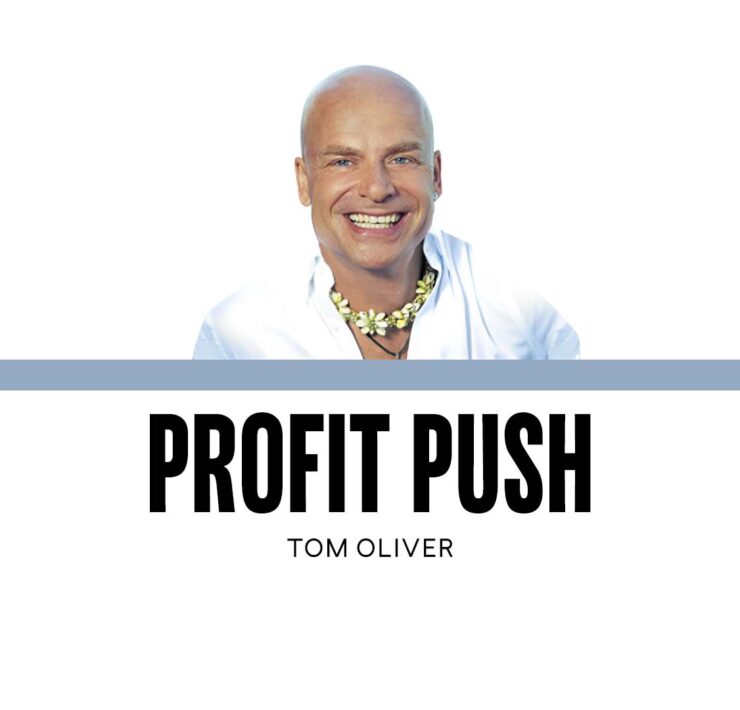Profit boost: Mastering the carrot and the stick
In business, very few things are as misunderstood—and misapplied—as the “carrot and stick” approach. The majority of CEOs and business owner-operators either underuse it, misuse it, or apply it unevenly. But when implemented correctly, it can be one of the most powerful tools to drive performance, engagement and ultimately, profits.
Most leaders are either too nice, relying only on motivation and incentives, or too harsh, punishing without offering a vision or reward. In truth, performance is best driven when people are both inspired by what they can gain and held accountable for what they can lose. Mastering this balance is essential to building a results-oriented culture.
The agent’s dilemma
Every business suffers from what economists call the principal-agent problem. The owner (the principal) wants long-term growth, innovation and results. The employee (the agent) often wants personal security, recognition and the path of least resistance.
This misalignment creates a hidden cost in most organizations. It’s why middle managers hesitate to challenge the status quo, hide customer feedback, or delay decisions that might be unpopular with leadership. They play it safe because the incentive system doesn’t reward truth-telling or risk-taking—and it certainly doesn’t penalize silence.
I’ve seen this first-hand across continents. In one Asian conglomerate, key middle managers consistently hid underperforming products from the CEO. Why? Because nobody wanted to be the messenger who “rocked the boat.” Profits suffered. It wasn’t until we overhauled the incentive structure—adding both downside consequences and upside rewards—that performance surged. The moment reality was rewarded more than politics, the company began to grow again.
The propulsion system for maximum performance
Humans are wired to perform at their best when they move both away from something (punishment) and toward something (reward).
Imagine your company as a rocket. The carrot is the fuel—the promise of achievement, growth, reward. The stick is the ignition spark—the awareness of consequences, discipline and urgency.
Too much carrot and no stick? The rocket sits idle, bloated with fuel but never launching. Too much stick and no carrot? It explodes or burns out your team. But used together in balance, the propulsion system works.
True peak performance doesn’t come from safety. It comes from tension—healthy tension. That means a culture where employees know that mediocrity won’t be tolerated, but excellence will be rewarded. Not arbitrarily, but based on crystal-clear, preset outcomes.
Clarity = culture = cash flow
The right balance of carrot and stick doesn’t create fear. It creates clarity. Clarity builds culture. And culture drives cash flow.
The best leaders are not afraid to say: Here is what we expect. Here is what we reward. Here is what happens when we fall short. Then they stick to it—ruthlessly consistent.
You can’t grow what you don’t measure. And you can’t motivate what you don’t manage.

How to get the incentives right
Most incentive structures fail because they’re built around inputs (how busy someone is) instead of outputs (what actually moves the needle). Leaders often say, “We pay bonuses if they work hard.” That’s a recipe for confusion and underperformance.
Here’s what works:
- Tie incentives to business-critical KPIs (key performance indicators), not activities.
- Use tiered rewards that scale with overperformance.
- Make the consequences of failure known, consistently and fairly.
- Avoid group bonuses unless the group truly depends on each other.
- A classic mistake: rewarding everyone equally, regardless of results. That trains your team to do just enough—not to excel.
In a Middle Eastern client company we advised, we replaced a flat “13th month salary” bonus with a performance-based quarterly bonus tied to profit margin, customer satisfaction and individual department targets. Within three quarters, productivity jumped 22 percent and employee satisfaction also rose. When rewards are earned, not given, they’re valued more deeply.
Common mistakes business leaders make
Let’s address what not to do:
- Confusing loyalty with performance: Just because someone’s been with you for 10 years doesn’t mean they’re the best person for the role today. Longevity should not shield underperformance.
- Avoiding the stick: Many leaders are conflict-averse. They avoid tough conversations, tolerate excuses and hope things improve. They won’t.
- Being vague about expectations: Ambiguity is the enemy of execution. If people don’t know what’s expected, they’ll default to comfort.
- Failing to enforce consequences: You lose culture the moment you let an underperformer stay without consequences. Everyone sees it. It signals that results don’t matter.
- Inconsistent rewards: Bonuses or recognition given on whims rather than data breed resentment and politics.
Optimum productivity drives optimum profitability
Productivity isn’t just a metric—it’s the engine of profitability. When every team member is aligned around outcomes, knows exactly what winning looks like and understands both the reward for hitting the goal and the cost of missing it, productivity skyrockets.
This is especially true in family businesses, where culture and emotion often interfere with accountability. In one US client case, a highly-respected family executive was underperforming. No one had the courage to confront him. After we facilitated a leadership alignment session, he was repositioned and three new board members were brought in. Profit margins improved by over 15 percent in 12 months.
In short: you can’t scale a business on unclear roles, unmeasured performance, or unchallenged mediocrity.
Client examples
Asia-Pacific Region: A manufacturing company’s CEO implemented a “results-only work environment” following our guidance. Bonuses were tied directly to operational efficiency. The result? Employee turnover dropped by 30 percent and profits increased by $2.1 million in the first year.
Europe: In a 55-year-old family-run business, the owner hesitated to penalize a beloved but ineffective chief financial officer. Once the role was reassessed and a sharper candidate brought in (with a performance-based bonus plan), revenue grew by 18 percent in 12 months.
United States: A direct-to-consumer brand removed group bonuses and added individual scorecards. Each scorecard had a mix of carrots (performance bonuses) and sticks (reduced quarterly rewards for missed targets). Sales performance improved across every region by double digits.
These aren’t isolated wins. They’re the direct result of systems that reward results—and hold underperformance accountable.
Three to thrive: Practical steps
- Audit your incentive structure: Look at who gets rewarded and why. Does it tie directly to profitability and performance? If not, redesign it.
- Embrace accountability: Have the tough conversations you’ve been avoiding. Underperformance must be addressed, or it becomes the culture.
- Rebalance the system: Ensure that your organization is equally driven by rewards and consequences. Only then will you unlock its full potential.
Tom Oliver, a “global management guru” (Bloomberg), is the chair of The Tom Oliver Group, the trusted advisor and counselor to many of the world’s most influential family businesses, medium-sized enterprises, market leaders and global conglomerates. For more information and inquiries: www.TomOliverGroup.com or email Tom.Oliver@inquirer.com.ph.


















